Stores that offer excitement in the food-to-go arena will reap the biggest rewards, as competition begins to hot up in the take-away market
As buzz words go, food to go seems to have had the greatest amount of sticking power, and its success for c-store retailers shows no sign of waning. The food-to-go sector is set to grow by 2.8% to a value of £20.7bn in the year ahead, outpacing the expected 1.5% growth in eating out as a whole, according to the MCA Food To Go Market Report.
The report says that the growth is being driven, in part, by an increase in commuter numbers, coffee culture and a move away from the three-meals-a-day routine.
Hannah Morter, marketing executive at Country Choice, adds consumers’ lack of time to the list. She says: “A rise in employment has led to a nation of time-poor consumers spending more on out-of-house dining throughout the day. Often these consumers leave home without eating breakfast and without making their own lunch, and so both meal times are becoming huge opportunities for the food-to-go retailer.
“While busier lives mean shoppers are looking for convenience and instant satisfaction, they are also unwilling to compromise on quality. Food-to-go specialists understand the market and are quick to provide on trend options to consumers, as a result they have experienced accelerated growth over the past year.”
Austin Kelly, store manager of Springisland Supermarket, Coalisland, Northern Ireland, has certainly seen the food-to-go market change since the store opened 20 years ago. “We started with a small range and one hot food cabinet, whereas now we have two,” he says. “We’ve noticed that the older generation who used to cook all their meals are now finding it’s easier to come in to buy their meals prepared.”
Consumer demand for quick, nutritious and satisfying food, that can support busy lives, will continue to rise, points out Alan Bird, commercial director at Wessanen UK. “There is also a growing trend for spontaneous purchases and the frequent top-up shop as consumers plan ahead less and buy smaller volumes more often instead,” he says.
One retailer to benefit from this trend is Jerry Tweney, owner of Budgens Prestbury Village Stores in Cheltenham, Gloucestershire. “The category has become more important as people have got into the habit of buying little and often. People don’t plan ahead and stock up like they used to, and this has been great for food to go,” he says.
“Prestbury is a very traditional area and the steak bake is definitely the most popular seller. If I run out of steak bakes and a builder comes in looking for their breakfast or lunch, they won’t be happy. Sausage rolls are also essential – they are easy to grab with a coffee to go.”
Harris Aslam, owner of seven Nisa-associated stores in Scotland, says his top-selling food-to-go products are all from the bakery counter, because the baker he uses is so well-known locally. Harris says: “His products are premium and everybody loves him and his cakes. We put them straight into our counter and all we have to do is bag or box them up.”
Paul Whitely, head of UK marketing at Aryzta Food Solutions, believes offering a strong range of freshly-baked products is a simple, cost-effective way for convenience retailers to attract new food-to-go shoppers and increase basket spend. He says: “In convenience, in-store bakery shoppers spend more than average shoppers and shop more frequently. The reality is that, on average, an in-store bakery can generate an extra £51.04 per shopper per month (HIM 2017).”
Give your lunch range some Urban style
The Urban Eat range, made by Adelie Foods, received a major makeover last year with a new more cohesive packaging design and improved product line-up.
The range now includes clear on-pack information and new additions including a chicken tikka bhaji, three halal and two gluten-free sandwiches, as well as four new toasties, under a number of ranges including Posh Nosh, No Fuss, Eat Better, and Roots.
Adelie Foods senior marketing manager Isla Owen says: “Approved by the Vegetarian Society, our Urban Eat Roots range contains nine different sandwiches and wraps to help retailers to make the most of this growing opportunity.
“We offer a variety of flavoursome, multi-cultural options ranging from The Beet Goats On – a goat’s cheese and beetroot sandwich on farmer’s bread – to the Beany McBeanface wrap, which consists of spicy bean, pepper and guacamole in a tomato wrap.”
She adds: “We’ve noticed that consumers are starting to care much more about the nutritional value of their food. Our chilled Urban Eat Eat Better range is packed with nutritious ingredients and caters for a variety of special dietary requirements, including gluten-free, high-protein, high in omega 3, high fibre and so on. A range of our sandwiches have been certified by Coeliac UK.”
Aryzta Food Solutions can provide a range of food-to-go items, from Seattle’s Best Coffee to Otis sweet treats. The company also offers a Heinz Cook-in-Pack hot food range that comprises four varieties of sausage roll and three panini flavours.
Duncan Hill, managing director of HL Display, advises retailers to evolve their food-to-go section in line with consumer trends. “What we are seeing at the moment is a desire among consumers for hot food and drinks that shoppers prepare themselves in store to take away. Like many other categories there is an interest among shoppers to try new flavours and ingredients, so alongside sandwiches we now also see things such as wraps, ciabattas and flatbreads more frequently.”
Harris adds that retailers have to go beyond the standard food-to-go range to take full advantage of the category. “If you just have the standard offering of baguettes and sandwiches then you aren’t going to have the same success as someone offering a bespoke food-to-go range that’s exclusive to their store,” he asserts.
“We do hot rolls, sausage rolls and bacon rolls,” he says. “We have a new in-store butchery so we can use the meat products in our sandwiches and make them up ourselves.”
Harris also adapts the range according to the season. “We get in lots of seasonal cakes for Christmas, such as chocolate snowmen and other quirky treats. I wonder how many retailers thought about changing their food to go for Valentine’s Day or Easter?”
Consumers are increasingly looking for variety, particularly in hot food-to-go, says Angela Daulby, UK group sales director for Kepak Convenience Foods. “Almost three-quarters (74%) of food-to-go shoppers now buy meat snacks or hot food to go regularly for lunch,” she says. “Lunchtime is the biggest occasion for Rustlers, with more than 60% of all Rustlers eaten for lunch.”
Last year the company added the Rustlers Gourmet range (rrp £3), packaged in a premium cardboard sleeve and comprising The Classic Burger and The BBQ Burger. Both are made with 100% beef, in a brioche bun.
“Rustlers Gourmet taps into the major foodservice trend for gourmet burgers which has filtered through to the high-street with the launch of the McDonald’s Signature range. Retailers can use Rustlers Gourmet Burgers to drive basket spend and attract new shoppers,” she adds.
Katy Hamblin, marketing manager at Pipers Crisps, says premiumisation is helping to fuel growth in food-to-go snacks, too. She says: “Snacks are an increasingly important part of the food-to-go sector, both as a standalone product and as a part of meal deals. And within this market there is a growing trend towards premium snacks, particularly crisps. Consumers are becoming far more discerning, actively seeking great-tasting snacks in preference to mediocre, commonplace fare whenever there’s a choice.”
Offering a premium range, she says, can help your store stand out, and given the huge competition for the food-to-go spend, that can only be a good thing. Morter at Country Choice says this is also where creating some theatre comes in. “This can be achieved by allowing customers to see sandwiches being made, if the store set-up allows, or by simply using branded POS and signage.”
Isla Owen, senior marketing manager for Adelie Foods, believes retailers need to make food-to-go shopping as straightforward as possible to get shoppers to spend. “We know consumers are naturally drawn to products at eye level, so retailers should stock the best sellers in this premium position.
“POS can help draw consumers’ eyes to these popular products, including shelf-edge strips and shelf talkers. Not only will they highlight the sandwiches that consumers love, they can feature more speciality ranges such as halal, gluten-free, vegan and vegetarian ranges that consumers might not be aware of otherwise.”
Break the morning routine
The long commute may not be much fun for travellers, but it could be good news for small stores, according to Samantha Winsor, assistant brand manager for Lantmännen Unibake UK.
“The rise in breakfast on the go is largely attributed to a rise in the average time taken to travel to work,” she says, “with travel times the highest on record, taking on average 28 minutes for those outside of London and 45 minutes for those commuting to the capital.”
She points out that a hot drink and premium pastry is an affordable option, which has contributed to croissants becoming the fourth most popular out-of-home breakfast. “With 53% of shoppers visiting more than one outlet to complete their food-to-go breakfast shop, more so than any other meal eaten out of home (MCA Eating Out Market Data Report 2017), it’s crucial for outlets to get their breakfast offer right,” she adds.
Lantmännen Unibake UK offers a range of pastry options including Schulstad Bakery Solutions, All Butter Croissant, Pain Chocolat and Pain Raisin.
The pastries can fill the gap in snacking, which Winsor says is the biggest occasion contributing to the food-to-go market (MCA Food to Go Market Report 2018).
The company recommends offering a selection of sweet and savoury hand-holdable bakery products. “By placing items such as apricot or apple crowns, cinnamon swirls and croissants in on-the-go packaging, retailers can take advantage of this trend,” Winsor says.
Susan Nash, trade communications manager at Mondelez International, also urges retailers to consider times of day when merchandising food to go. She says: “Breakfast and lunch are all about routine and convenience, whereas afternoon is about hunger and wanting a treat (Nielsen, 2017). Wholesalers should make retailers aware that, for this mission, the convenience element plays a big role.”
Bird adds that well-placed promotions can help give retailers a point of difference. He says: “Cross-marketing deals that can help drive sales work well. While consumers are in a rush, they still value a good deal and appreciate in-store suggestions and promotions. Retailers should rotate their offers every few weeks to keep their customers interested and allow them to try out different, exciting products.”
Food to go can also be a great way to encourage incremental sales in other impulse categories, such as gum, points out Kathy McAllister, refresh portfolio director for Mars Chocolate and Wrigley UK.
She says: “Wrigley encourages consumers to chew sugar-free gum after they eat or drink to help remove lingering food and help keep teeth clean and healthy. As chewers increasingly look for a convenient addition to their oral care routine, it’s important for retailers to understand that gum is a healthy option to associate with food on the go, as well as placing at the till point.”
McCallister suggests adding gum to a meal deal, such as ‘a sandwich and pack of chewing gum for £2’.
Cheese is on the move
Cathedral City believes a focus on quality and big brands can help bring credibility to a convenience store’s food-to-go range, and its latest addition – Cathedral City Snack Bar – is designed to offer just that.
The 30g cheese bars are available in mature and lighter mature variants, with the latter containing just 99kcals per portion.
Cathedral City snacking brand manager Anca Lazar says: “Our Snack Bar offers the opportunity to drive relevance and consideration of cheese as a savoury snacking alternative at these on-the-go snacking occasions, when merchandised alongside other grab-and-go food items.”
The Snack Bars also meet demand for healthy options, given that 39% of food-to-go c-store shoppers consider a range of healthy options and alternatives as important in store (HIM 2017).
Lazar adds: “Health continues to be a huge priority for consumers and demand for healthy food to go continues to rise. It is therefore imperative for retailers to stock a variety of nutritious food-to-go options to remain competitive. Consumers are becoming more mindful of the quality of calories, which means that naturally nutritious snacking products have become popular.”
The future
Although the food-to-go category in c-stores has grown substantially, it still has a long way to go before it emulates the choice and taste available elsewhere on the high street, according to Jake Karia, managing director at filled naan breads provider Food Attraction. “If you look to the high street, you see a range of world flavours, from Mexican to Indian, but the food-to-go category is still largely dominated by typically English cuisine. If the category really wants to surpass the eating-out sector then it’s essential that brands continue to grow the category so that it mirrors the range of tastes, flavours and choices that the high street offers.”
Harris thinks that the intense competition within the food-to-go sector may force many retailers to up their game. “The first thing you have to think as a retailer is where you would go for your breakfast or lunch,” he says. “I bet you most often it’s places like Eat or Greggs; coffee shops that offer a better range than your average Spar, Nisa, Costcutter and so on.”
Inspired by his visit to the Amazon Go store in Seattle, Harris wants more retailers to approach the food-to-go category with the same kind of enthusiasm. “I don’t think that waste is the issue for most retailers, it’s more a case of not knowing where to start and a lot of retailers don’t have enough time to plan their food-to-go range.
“If they were running a coffee shop as a standalone then they would plan a different menu and change products from one week to the next; I think that is how we should be looking at food to go if we want to take it to another level.”
Break the morning routine
The long commute may not be much fun for travellers, but it could be good news for small stores, according to Samantha Winsor, assistant brand manager for Lantmännen Unibake UK.
“The rise in breakfast on the go is largely attributed to a rise in the average time taken to travel to work,” she says, “with travel times the highest on record, taking on average 28 minutes for those outside of London and 45 minutes for those commuting to the capital.”
She points out that a hot drink and premium pastry is an affordable option, which has contributed to croissants becoming the fourth most popular out-of-home breakfast. “With 53% of shoppers visiting more than one outlet to complete their food-to-go breakfast shop, more so than any other meal eaten out of home (MCA Eating Out Market Data Report 2017), it’s crucial for outlets to get their breakfast offer right,” she adds.
Lantmännen Unibake UK offers a range of pastry options including Schulstad Bakery Solutions, All Butter Croissant, Pain Chocolat and Pain Raisin.
The pastries can fill the gap in snacking, which Winsor says is the biggest occasion contributing to the food-to-go market (MCA Food to Go Market Report 2018).
The company recommends offering a selection of sweet and savoury hand-holdable bakery products. “By placing items such as apricot or apple crowns, cinnamon swirls and croissants in on-the-go packaging, retailers can take advantage of this trend,” Winsor says.




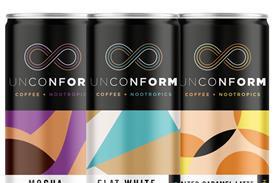

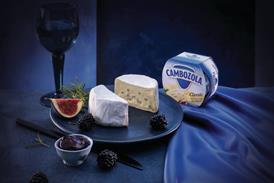
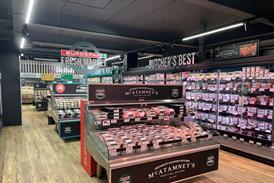

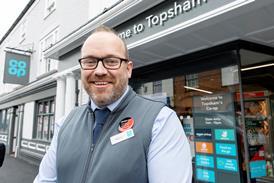

![WG-4003[58]](https://d2dyh47stel7w4.cloudfront.net/Pictures/274x183/4/5/1/353451_wg400358_6083.jpg)





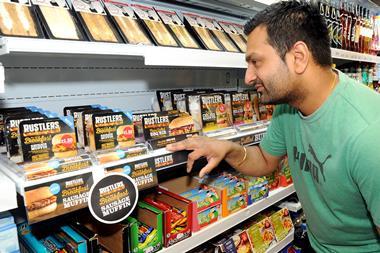

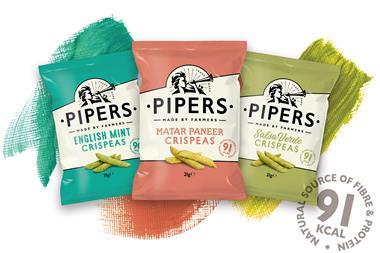



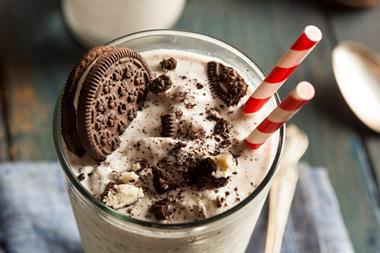

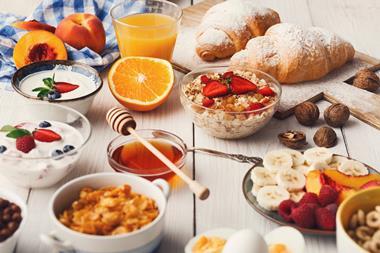
No comments yet